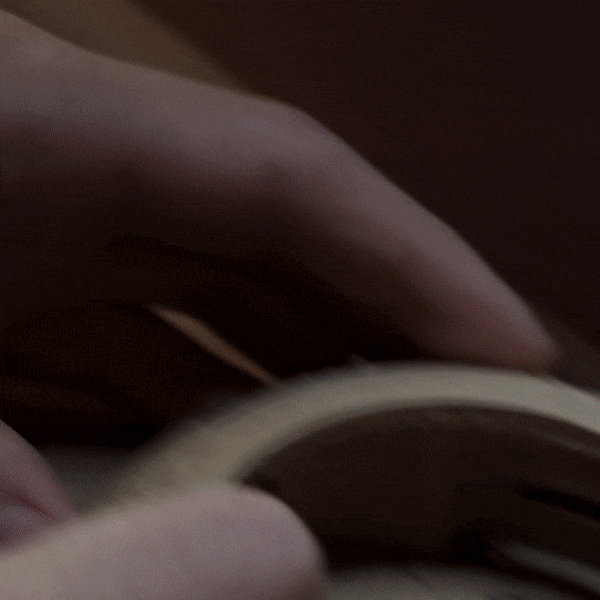The name is referential of both the concave grille shape and the rare earth magnetic rock revealed in the explosive act leading to its creation. Volcanic eruption captured both the ethos an impact we felt when listening to the Caldera.
fig.1
the story
After modding, breaking, and completing hundreds of Fostex t50rp mods over the years I spent a lot of time staring at planar drivers. I tried experimenting to make the drivers sound effortless, dynamic and resolving. When modding though, I was always starting backwards, reverse engineering a driver someone else created. I dreamt of making my own “from scratch” planar driver when ZMF transitioned to dynamic driver headphones, but with so many amazing planar’s out, I didn’t want to be reductive, or redundant. After a lot of failed experiments, and over 6 years of trying, the Caldera driver, CAMS (Caldera Asymmetrical Magnet Structure), and Atrium Damping System; the magic of ZMF’s proprietary planar technology has been born.
Tuning the Caldera has been a trick, in that with ADS, CAMS and pad options, there were more configurations within that system than I could wrap my brain around. With all the talk of the Harman curve in the last few years, I’ve done extensive testing on what parts of the curve my particular preferences align with, and which don’t. For me, I really appreciate the upper mids of the Harman target - as the ascent of the curve from 1-3 KHZ does meet my preferences pretty closely, and seemingly even more-so with a planar driver than dynamic drivers. The toughest part of the process (with tuning in mind) , after testing about 20 materials via ADS, was the earpads. Most planar and dynamic designs are either fully perforated, or fully solid, with a number of current manufacturers using hybrid airflow design. I also realized, that with the CAMS system, that airflow was “fanned” out. With this in mind I designed the Caldera pads, to have an asymmetrical angled shape, where the thickest part of the pad in behind and under each ear, and the airflow “fans” out at a similar angle towards the ear that is imparted by the magnet design. This is illustrated below - showing how the airflow is “uninterrupted” as it makes it's way to the ear.
With so many new facets in play, the Caldera is a completely new and novel design for ZMF and the world of planar magnetics. Patent Pending CAMS technology couple with also Patent-Pending ADS forms a dynamic duo, making for the most explosive planar experience that intertwines the ZMF sound, with Dynamic and Planar technology. Hearing the Caldera for the first time is an experience like no other, and we’re excited to take that hike up the mountain with you.
The Caldera pads are fluted from inside out (see fig.1/d.), channeling the path to the ear for airflow that starts at the Caldera membrane. Coupled with a unique semi-vented air-flow (fig.1/b.), and an asymmetrical angled design (fig.1/c.) we introduce dimensionality to a driver whose size otherwise dictates presentation. The lessons of our limits are innovation.
fig 2
a. Trapezoidal shaped N52 (Neodymium) magnets containing an energy product or (BH)Max of 52MGOe (Mega-Gauss Oersteds). The N52 classification is one of the highest magnetic forces to size ratios and allows for this unique shaping without loss of magnetic tension. b. Four trace, eight pathway diaphragm; We have fully utilized the membrane surface, increasing both tension and movement, by minimizing the magnet footprint without compromising on force. c. Soundwaves are channeled toward the ear through the specialty fluted Caldera pads. The magnet shape functions so as not to block sound but direct it. d. A new iteration of the Patent-Pending Atrium damping system, custom fit for our planar drivers, allow for controlled rear damping which limits sound leak and maintains desired pressure.
ADS (Atrium Damping System) allows the designer of an acoustic headphone system a myriad of options to best tune the pressure and airflow behind a headphone driver. Back-wave cancellation is minimized and more pressure is exerted in a controlled manner towards the ear, and carefully away from the back volume. The Caldera ADS system works in harmony with the ret of the drivers magnets, and Caldera pads, to give the listener the most dynamically involved planar magnetic experience we could muster.
fig. 3
e. Square shaped magnets commonly used in planar magnetic headphones (ie. original fostex rp technology) f. Four trace diaphragm for comparison; manufacturer would likely minimize traces per pathway g. With less active trace area the mobility of the diaphragm would be lessened. A typical compromise means further spacing of magnets yielding less tension h. Nullified trace response demonstrating the limits of squared magnet shapes. i. Without back end damping noise bleed and pressure loss make for a less controlled sound.
fig. 4
fig. 5











